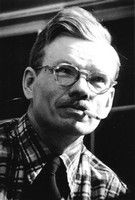
|
|
|
|
The Art World
Landscape Club Exhibits 50 Works, With Modern Art Taking Prizes
Easter, the Resurrection, life renewed and hope revived appear to be symbolized on every hand at this time of year, in the tender green of trees, the deepening blue of sky and the flower-starred earth. Many of us are more conscious of nature in spring than in any other season.
It would seem to be an appropriate time for an exhibition of landscape paintings, such as the annual of the Landscape Club of Washington, which opens this afternoon at the Corcoran Gallery of Art. But only a small proportion of the paintings on view represent spring. Since the artists need to take advantage of holidays for outdoor painting (one of their objectives), there are many summer scenes done presumably during vacation weeks last year, and autumn and winter landscapes transcribed during week ends.
The present exhibition is the largest I have seen by this organization. It numbers 50 works, in oil, water color, and graphic arts. Furthermore, it includes a larger proportion of modern, or experimental, works, which captured a majority of the awards.
A jury composed of James W. Lane of the curatorial staff, National Gallery of Art, and Dong Kingman, watercolorist now in the Army, who has been stationed in Washington for some months, awarded three silver medals, a prize and several honorable mentions. The medal for oil painting went to Andrea Pieto Zerega for his lush, broadly handled landscape, "Near Rockville." Samuel B. Pratt received first honorable mention for his impressionistic oil, "Autumn;" Carl Nyquist, second honorable mention for his poetic interpretation, "Georgetown Reflections"; Kenneth Stubbs, third honorable mention for "Georgetown Roofs," in soft red and green; Paul L. Thompson, fourth honorable mention for his semiabstract "Driftwood."
Eliot O'Hara's "Upland Grass" received the silver medal for water color. It is uncompromisingly direct in statement, juxtaposing the area of pinkish yellow grass and the deep blue of distant mountain. Honorable mention in this medium was bestowed on Omar Carrington's "Red Southern Moon," a sultry nocturne.
Star Staff Artist Wins Graphic Art Medal
Newman Sudduth's linoleum block print, "Charleston Street Scene," a crisp interpretation of romantic subject matter, won the silver medal for graphic arts. (Readers of the Evening Star are familiar with the beautiful portraits and other drawings by this artist, who has long been on the Star's art staff.) Prentiss Taylor received honorable mention in graphic arts for his charming "View From Taxueno," done in orange and green crayon.
The Thomas Saltz Price for the most interesting picture in the exhibition was given to Syd Browne's "East Side Market." It is well painted, the figures of the slum people are individualized, doing their marketing on a snowy day against a backdrop of tenement buildings.
Far from being circumscribed, the Landscape Club members interpret the term "landscape" to include not only views of the country side, but also marines, urban, river and harbor scenes. In one instance, Pietro Lazzari's "City Landscape," the title seems to be a misnomer, as the painting is dominated by a heavy nude figure, modeled in pigment, emerging from an abstract landscape.
But the majority of paintings, whatever the technique, leave the spectator in not doubt as to their subject matter. Approximately half of the 40 paintings are naturalistic in handling and pleasant in subject. Some of them deal with familiar aspect of Washington, including two of the prize winners, "Key Bridge," by Carl Nyquist, and Rowland Lyon's fresh, cheerful glimpses of neighborhoods that once knew better days, "Early Spring" (3rd and F streets S.W.), and "Gus' Store." Edward Grove's "Nocturne, Smithsonian," is an austere side view of the pseudo-Gothic building.
Painting Traditional Of Landscape Club
Benson Moore's high-keyed "Virginia Hills in Autumn," Sheffield Kagy's "Gray Day Near Woodstock," Charles C. Councell's "Gaspe Fishing Village" (a pastel), Eugen Weisz's luxuriant summer view of Penobscot, Me.; Minor Jameson's gray and white "Winter Vista," Anthony Zerega's "In Northern Virginia" (at harvest time) and "Road in Fairfax County" by Garnet Jex, are all paintings in the tradition one has come to expect of the Landscape Club (which is more than 30 years old). Louis Robert's "Wind in the Corn" has an interesting color scheme. "The Great American Game," by Howard Chapman, employs raw primary colors which seem right for the impromptu game of ball on a street corner.
Water colors I like include Alexander Lee's "Road to Greenwich," Charles Carlson's little "Auction Sale" in the country, and Paul Arlt's glimpse of far-off "Zamboanga from the Air."
Florence Berryman, Washington Sunday Star, April 21, 1946, page C-3
|
|
|
|

